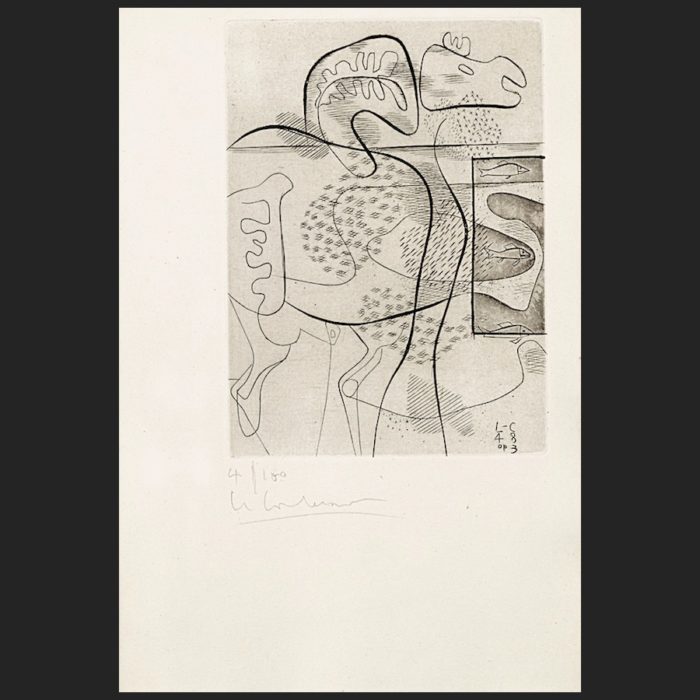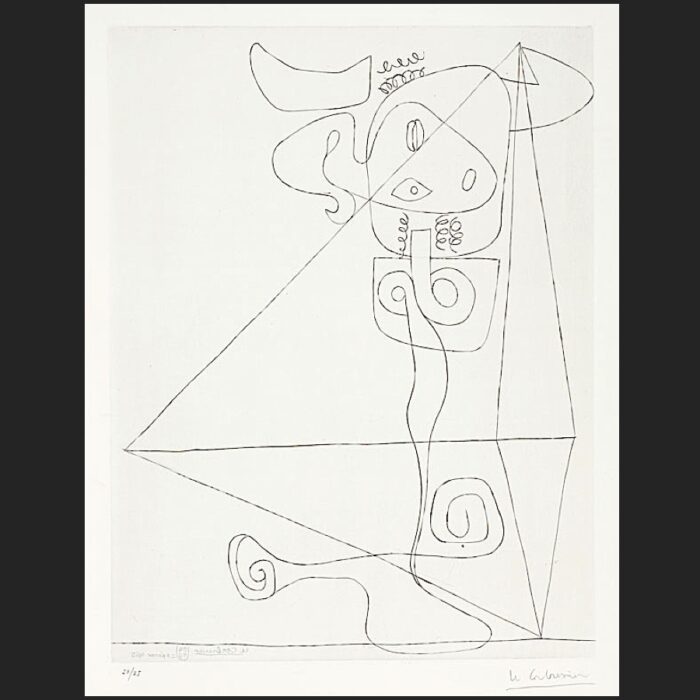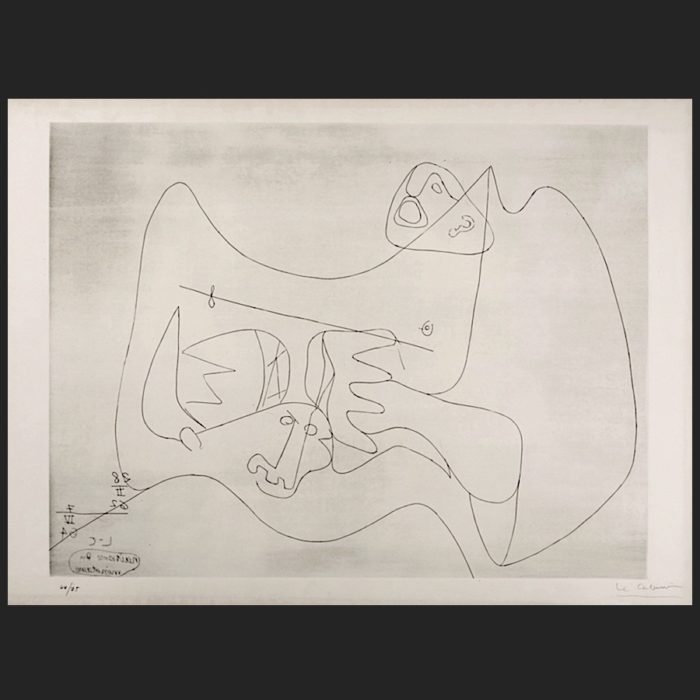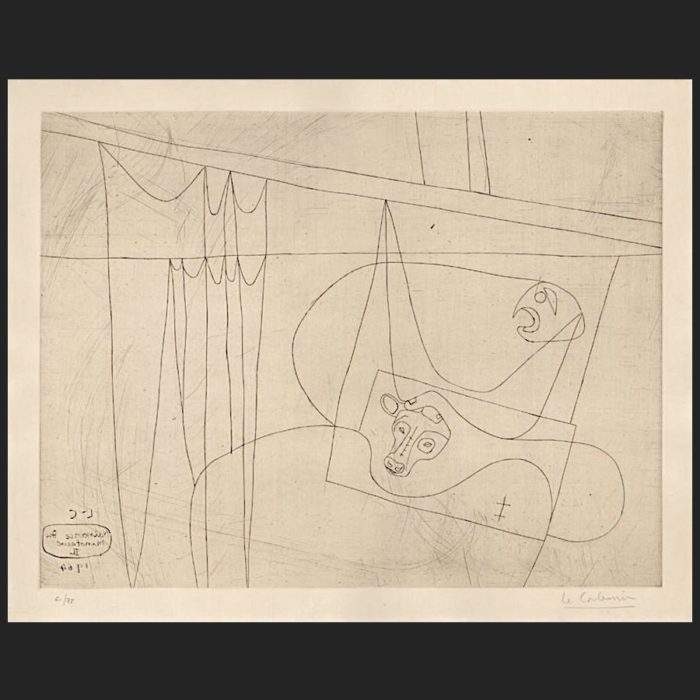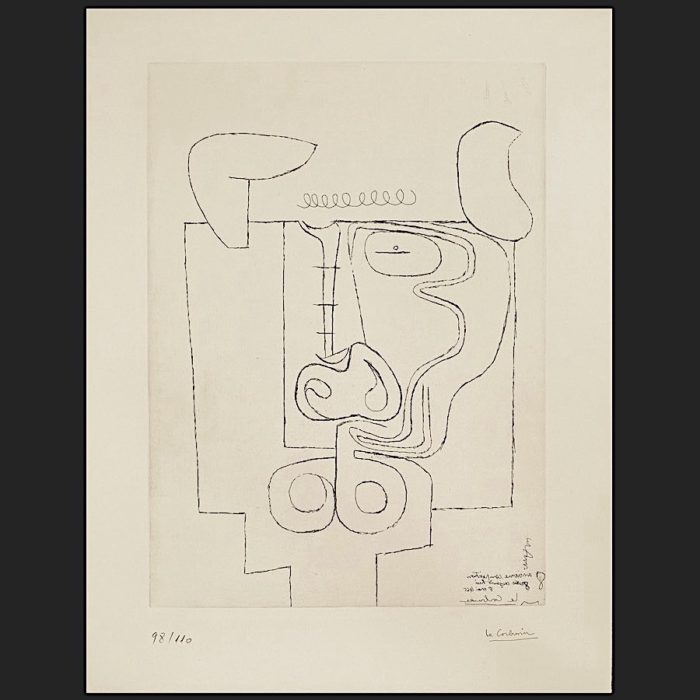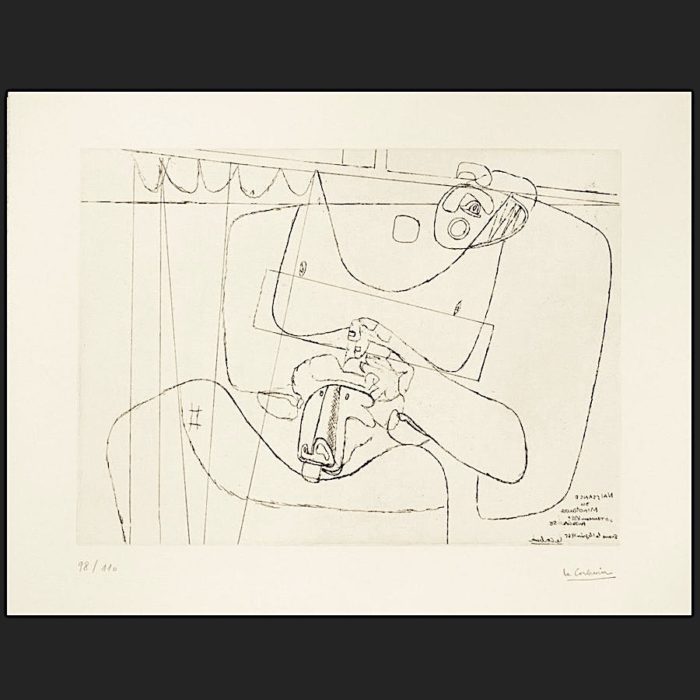After his first prints in color in 1937/38, Le Corbusier did not resume any printed work, due to the Second World War, until 1946 in New York, where he prepared a project for the main building of the newly founded UN. Here he met Stanley William Hayter, the founder of Atelier 17, the printmaking workshop specializing in intaglios that had moved from Paris to New York. Through his contact with Hayter, LC started to work in metal again, for the first time since his school-time in La Chaux-de-Fonds.
Up to 1948 he produced, during his numerous visits to New York, five intaglio prints, each labeled on the plate as Opus 1 to Opus 5 respectively. Hayter printed a small edition of Opus 1, “New York”, twenty of which LC signed and numbered. In Paris, up to 1953, Paul Haasen printed editions of the four further plates in the series, Le Corbusier signed 100 exemplars of each. Starting in 1963, Heidi Weber brought out some further, this time larger, works, mostly in editions of 75 exemplars.



